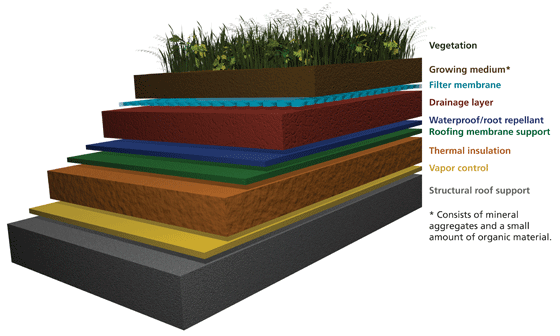Sustainable Practices: Green Roof Construction Strategies

Sustainable Practices: Green Roof Construction Strategies
Green roof construction is gaining popularity as an environmentally friendly approach to building design. These innovative roofing systems not only provide aesthetic appeal but also contribute to sustainability and energy efficiency. Let’s explore the key strategies involved in constructing green roofs.
Understanding Green Roof Construction
Green roofs, also known as living roofs, involve the cultivation of vegetation on building rooftops. The construction of such roofs is a carefully planned process that requires expertise in structural engineering, horticulture, and environmental science. The goal is to create a thriving ecosystem atop buildings while enhancing energy efficiency and sustainability.
Structural Considerations and Reinforcements
The first step in green roof construction involves assessing the structural capacity of the building. The additional weight of soil, plants, and water necessitates proper reinforcement to ensure the structure can support the load. Engineers work to strengthen the building’s framework, ensuring it can withstand the added weight and potential water retention.
Waterproofing and Drainage Systems
Waterproofing is a critical aspect of green roof construction to prevent water leakage into the building. A robust waterproofing membrane is installed to protect the underlying structure. Additionally, efficient drainage systems are implemented to manage excess water runoff, preventing waterlogging that could damage the roof and compromise the integrity of the building.
Selecting Appropriate Growing Medium
The growing medium, or substrate, on a green roof is crucial for plant health and overall system performance. It needs to be lightweight, well-draining, and nutrient-rich to support plant growth. The choice of growing medium varies based on climate, plant selection, and specific project requirements. A carefully selected substrate promotes healthy vegetation and efficient water management.
Choosing Suitable Vegetation
Green roof construction involves selecting vegetation that is well-suited to the local climate and environmental conditions. Drought-resistant plants are often preferred, as they require less irrigation and can thrive in varying weather conditions. Native plant species are commonly chosen to enhance biodiversity and support local ecosystems.
Implementing Irrigation Systems
While green roofs are designed to capture and retain rainwater, supplementary irrigation systems may be necessary, especially in drier climates. Drip irrigation or other water-efficient systems ensure that plants receive adequate moisture without excessive water usage. Smart irrigation technologies can optimize water distribution based on real-time weather conditions.
Energy-Efficient and Insulating Properties
Green roofs offer natural insulation, reducing energy consumption for heating and cooling. The vegetation and substrate act as a barrier, providing thermal resistance and improving energy efficiency. This can result in lower energy bills for the building while contributing to a more sustainable and comfortable indoor environment.
Biodiversity and Ecological Benefits
Beyond energy efficiency, green roofs contribute to biodiversity and ecological well-being. They create habitats for birds, insects, and other wildlife, fostering urban biodiversity. The presence of greenery on rooftops also helps mitigate the urban heat island effect, enhancing overall environmental quality.
Maintenance Considerations for Longevity
Proper maintenance is essential for the longevity and effectiveness of green roofs. Regular inspections, weed control, and irrigation system checks are part of routine maintenance. Collaboration with professional landscaping services ensures that the green roof continues to thrive and fulfill its environmental objectives.
Conclusion: A Greener Tomorrow with Green Roofs
Green roof construction represents a sustainable and forward-thinking approach to urban development. By integrating vegetation into the built environment, we not only enhance the aesthetic appeal of our cities but also contribute to energy efficiency, biodiversity, and overall environmental health. Explore more about green roof construction and its benefits at Green Roof Construction to embark on a journey towards a greener tomorrow.









